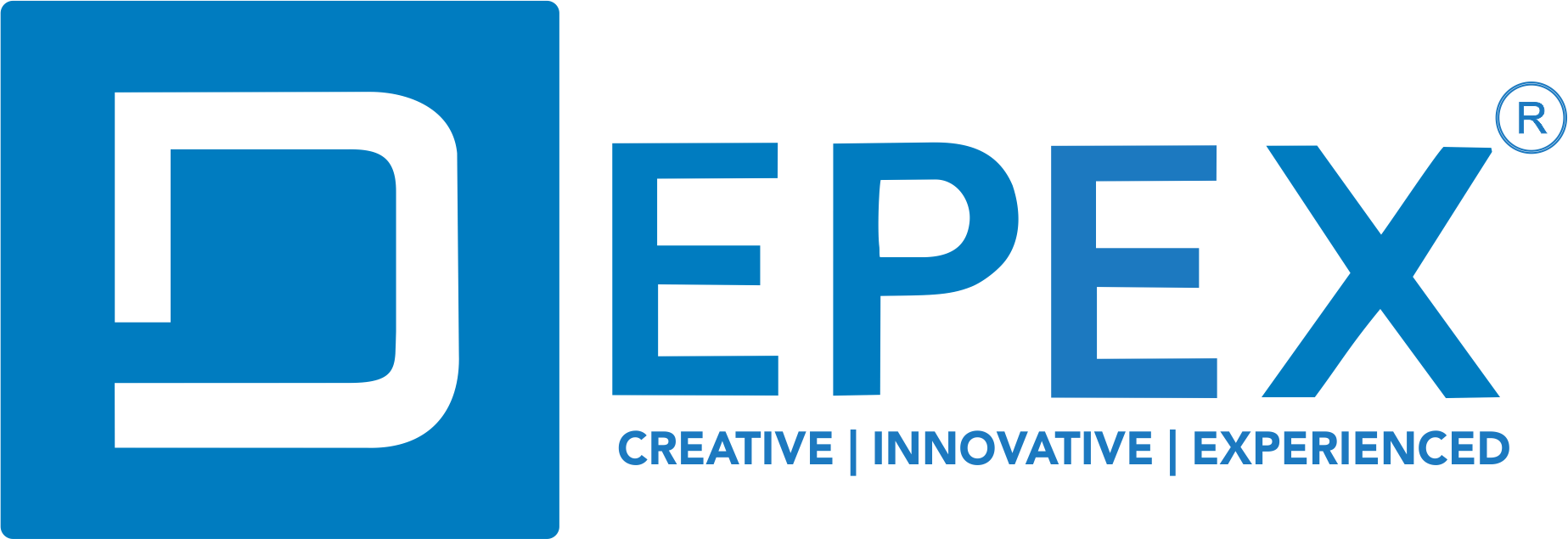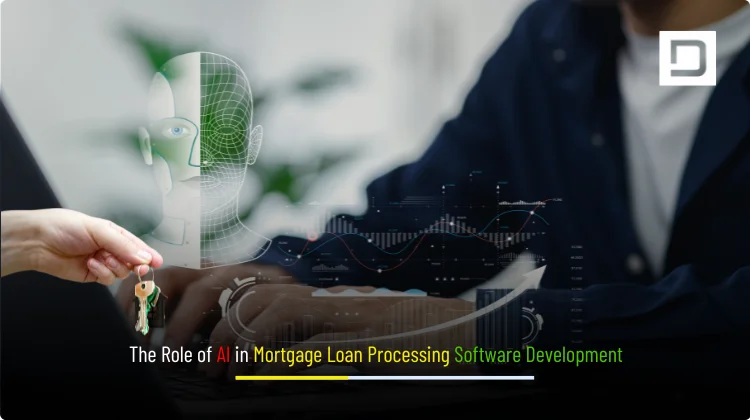The Role of AI in Mortgage Loan Processing Software Development
Mortgage lending is a complex relay of information, decisions, and compliance checks. From prequalification and document intake to underwriting and post-closing audit, teams sift through hundreds of data points per file while staying aligned with changing regulations. Any friction delays approvals and inflates cost per loan. Artificial Intelligence is now the critical layer that removes this friction. In this guide, we explain how AI transforms mortgage loan processing software Development, why lenders and fintechs are standardizing on intelligent components, and how Depex Technologies can help you build a compliant and scalable platform that borrowers trust.
Why mortgage loan processing needs AI now
Traditional mortgage operations rely on manual verification, rules in legacy LOS platforms, paper-heavy workflows, and sequential decision making. This creates several challenges:
- Slow turn times. A typical file touches many systems and people. Cycle time creeps up with every rekey and clarification.
- Rising costs. Human review dominates operational spend.
- Compliance risk. Frequent regulation updates and state-specific rules stress teams.
- Variable borrower experience. Borrowers want instant answers and a mobile first process.
- Data sprawl. Bank statements, pay stubs, tax forms, appraisals, and alternative income proofs arrive in multiple formats.
AI addresses each pain point with automation, prediction, and assistance. When integrated properly, AI reduces processing time from days to minutes for common steps while increasing accuracy and transparency. The result is a stronger borrower journey, lower cost per loan, and a more resilient operation.
AI-First Search and the mortgage stack
Borrowers and loan officers search for answers in natural language. They want to ask a question and see a precise, auditable answer. An AI-First Search approach layers retrieval augmented generation on top of your knowledge base: product guidelines, state overlays, checklists, and pricing matrices. Instead of navigating a maze of PDFs, a processor can ask:
- What is the maximum DTI for a first time buyer in New Jersey with a 680 FICO and 5 percent down
The system retrieves the relevant policy snippets, cites them, and explains exceptions. This reduces training time for new staff, compresses the number of escalations, and keeps policy use consistent across branches.
Core AI capabilities in mortgage loan processing software Development
1) Intelligent document intake and classification
Mortgage files are document heavy. AI models can detect and classify documents by type and version as soon as they arrive. Bank statements, W-2s, 1099s, gift letters, VODs, and appraisal addenda are routed to the right queue with confidence scores. A good intake engine also flags missing pages and low quality scans, and requests a clean upload through borrower self-service before downstream steps begin. This protects the underwriting timeline and reduces exceptions.
What makes this work well:
- A robust forms taxonomy that covers retail, correspondent, and broker channels
- Confidence thresholds that trigger human review only when needed
- Built in redaction for sensitive fields before documents are shared with third parties
2) OCR and data extraction built for mortgages
Mortgage specific OCR is not generic text scraping. It is a combination of template aware extraction and layout aware models that recognize where pay period, gross wages, overtime, interest, and escrow details live on different statements and forms. The system maps extracted data into your LOS fields and flags anomalies.
High value outcomes:
- Fewer manual data entry errors
- Automatic population of the 1003 and related forms
- Faster move from disclosures to underwriting
3) Income calculation engines
This is where AI shines. Income can be simple for salaried borrowers and complex for self-employed profiles. An AI income engine reads pay stubs, W-2s, tax returns, and profit and loss statements, then computes qualified income by program rules. It can separate base from variable income, average over the correct periods, and apply haircuts to declining trends.
Best practices:
- Explainable outputs with worksheets that auditors can follow
- Program aware logic for FHA, VA, USDA, conventional, and non-QM
- Alternate income support for gig economy and asset depletion scenarios
4) Credit risk scoring and pre-underwriting
Traditional credit models offer a snapshot. AI models provide a dynamic risk signal that combines bureau data, income stability, expense patterns, property market data, and manual overlays. Pre-underwriting bots compare the file against guideline matrices and flag potential deal killers early, saving the team from chasing dead ends.
Why this matters:
- Fast conditional approvals
- Transparent exceptions management
- Better pull-through without adding headcount
5) Fraud detection and anomaly spotting
Fraud in document images, identity details, and bank activity is subtle. AI checks for duplicate pixels, cut and paste artifacts, and inconsistent EXIF data in scans. It can verify names, addresses, and employment footprints against public sources. Anomaly models detect bank statement deposits that do not align with declared income or unusual cash move patterns before they become post-closing buyback risks.
6) Appraisal and collateral analytics
AI augments the collateral review with market comparables, price trend analysis, and condition risk signals extracted from appraisal narratives. While appraisal independence rules stay in force, an AI layer can still validate that comps are suitable, highlight edge cases, and recommend escalations to a desk review when valuation uncertainty is high.
7) Workflow orchestration and case management
Mortgage processing involves queues, handoffs, and SLAs. AI orchestrates tasks based on predicted effort and bottlenecks. Files that need a quick VOE get routed differently than complex self-employed packages. Real time prioritization reduces aged loans. Natural language agents summarize the file status for borrowers and realtors, lowering call volume while improving transparency.
8) Compliance automation and auditability
AI does not change your duty to comply, it helps you prove compliance. An embedded policy layer tracks which guideline version was used for each decision, which documents were visible to the underwriter, and which exceptions were approved by whom. A structured audit trail with citations is critical for exam readiness and investor confidence.
9) Conversational assistance for teams and borrowers
Processors, underwriters, and closers ask thousands of questions. A conversational assistant trained on your policy library, LOS data schema, and checklists answers quickly with citations. Borrowers use a similar assistant to understand conditions, upload the right documents on the first try, and track progress without waiting on email.
10) Pricing and eligibility recommendations
Pricing engines look at FICO, LTV, occupancy, and lock terms. AI enhances this with eligibility interpretation that explains why a product fits or fails and what change could make it fit. The assistant might suggest a small down payment shift, a gift letter correction, or a closing cost structure that keeps DTI within bounds.
A reference architecture for AI-powered mortgage platforms
1. Data layer
Centralize file data in a secure lake that ingests documents, LOS events, pricing snapshots, appraisal packets, and communication logs. Use role based access and encryption at rest. Maintain a policy library with versioning.
2. Model layer
Host OCR, classification, income calculation, fraud detection, and conversational models. Use modular services so components can be upgraded without breaking the workflow. Keep model cards with performance figures and known limitations.
3. Orchestration layer
Manage queues, SLAs, and task routing. Trigger model calls at the right step and collect confidence scores. Provide fallbacks to human in the loop when confidence is low.
4. Application layer
Deliver role specific UIs for borrowers, loan officers, processors, underwriters, closers, and auditors. Include a single source of truth dashboard that shows file status, blockers, and cycle time metrics.
5. Integration layer
Integrate with the core LOS, POS, pricing engine, e-signature provider, credit bureau, VOE and VOI vendors, appraisal management platforms, and compliance systems. Use webhooks to keep everything in sync.
6. Observability and governance
Track model accuracy, exception rates, and turnaround time. Maintain a decisions log with versioned guideline citations. Supply a sandbox where policy teams can test updates before rollout.
Security, privacy, and compliance foundations
Mortgage data is sensitive. The platform must meet strict standards:
- Data minimization and masking. Only reveal fields required for current tasks. Automatically redact PII in shared artifacts.
- Access controls. Enforce least privilege by role and by loan. Log and review access attempts.
- Encryption. Encrypt in transit and at rest. Rotate keys regularly.
- Audit trails. Capture who viewed what, which model produced which value, and which policy version applied.
- Model governance. Document training data, testing, drift thresholds, and human in the loop triggers.
- Regulatory alignment. Ensure ECOA, FCRA, TILA, RESPA, and state equivalents are respected. Provide adverse action explanations that are clear and non-discriminatory.
Implementation roadmap with measurable outcomes
1st Phase : Discovery and foundations
- Map current workflows, SLAs, and exception patterns.
- Inventory documents and define an intake taxonomy.
- Establish the data lake and security controls.
Outcome: A clear blueprint and a baseline for time per step and defect rates.
2nd Phase : Intake and extraction
- Deploy document classification and OCR.
- Auto populate 1003 fields and standard worksheets.
Outcome: Drop manual data entry by a significant percentage with measurable accuracy gains.
3rd Phase: Income and pre-underwriting
- Roll out income calculation engines across borrower types.
- Add rules based checks with AI suggestions for missing data.
Outcome: Faster conditional approvals and fewer back and forth emails.
4th Phase: Fraud, collateral, and compliance
- Integrate fraud detection, appraisal analytics, and compliance audit trails.
Outcome: Reduced buyback risk, improved investor confidence, and cleaner audits.
5th Phase : Conversational assistance and AI-First Search
- Launch knowledge assistant for staff and borrowers.
- Add retrieval augmented answers with policy citations.
Outcome: Shorter training cycles and fewer escalations.
6th Phase: Optimization and scale
- Use orchestration metrics to rebalance queues.
- Fine tune models with human feedback.
Outcome: Sustained reduction in cycle time and cost per loan with better NPS.

Measuring success: KPIs that matter
- Cycle time per milestone. From application to conditional approval to clear to close.
- Touch time per file. Total human minutes by role.
- Defect and exception rate. Conditions returned, resubmissions, buybacks.
- Pull-through rate. From locked loans to funded loans.
- Borrower satisfaction. Time to first response, clarity of conditions, and app abandonment.
- Audit readiness. Time to produce a complete file history with guideline citations.
Designing for explainability and fairness
Underwriting decisions must be explainable. AI components should produce human readable rationales that map to guidelines and source documents. Each decision should include:
- The specific guideline text used
- The extracted data fields with provenance
- The calculation method and rounding rules
- The exception path, if any, with approver identity
Fairness testing is also essential. You must monitor for disparate impact by protected classes. Use de-biased training where possible and maintain a policy for handling flagged patterns. This protects borrowers and keeps your operation aligned with regulations.
Borrower experience by design
Borrowers do not care about the names of your internal systems. They care about speed, clarity, and trust. AI enables a simple journey:
- Smart application. The form adjusts to borrower type and prefills known data.
- Guided uploads. The app asks for exactly what is missing and checks quality instantly.
- Transparent status. Borrowers see what is complete, what is pending, and why.
- Clear conditions. Each condition is plain language with one click actions.
- Instant help. The assistant answers policy and document questions with citations.
A consistent experience reduces abandonment and helps loan officers focus on relationships rather than chasing paperwork.
Build vs buy: how to choose the right AI path
Some teams adopt point solutions for OCR or income while others commission a platform. The right path depends on your scale, products, and appetite for control.
When to assemble:
- You want best in class components and have strong engineering.
- You plan to differentiate on workflow and credit policy.
- You need vendor flexibility across channels.
When to buy a full stack:
- You want speed to market with standard features.
- You need predictable cost and a single vendor to manage.
- You prefer configuration over deep customization.
Depex Technologies supports both strategies. We integrate with your LOS and preferred vendors or deliver a turnkey platform tailored to your product mix. Either way, the goal is the same: faster loans with lower risk and happier customers.
Cost and time considerations
AI reduces operational spend, but it also requires smart investment. The important levers are:
- Automation coverage. Start with high volume document types and income scenarios.
- Confidence thresholds. Balance straight through processing with appropriate human oversight.
- Change management. Train staff on new tools and update SOPs to capture gains.
- Vendor economics. Track per page, per model call, or per file pricing to keep unit costs under control.
- Cloud scaling. Use autoscaling for peak days like rate drops and month end.
A well planned rollout often pays back quickly by cutting manual steps, reducing rework, and speeding funding.
Real world example scenarios
Scenario 1: Salaried borrower with overtime
The intake engine classifies pay stubs and W-2s, OCR extracts base pay and variable pay, the income module calculates a two year average for overtime, and the rules checker confirms eligibility. The assistant generates a conditions list with reason codes. Processor time drops dramatically.
Scenario 2: Self-employed borrower with K-1
The model reads Schedule K-1, adjusts for non-cash add backs, and flags a decline in distributions. The system recommends a letter of explanation and a current P and L with balance sheet. An auditor sees the entire chain of logic with citations to forms and guideline text.
Scenario 3: Bank statement loan
OCR detects large deposits that do not match declared income streams and requests additional context. Fraud checks run image forensics. The processor gets a summarized alert rather than finding the issue after underwriting, which saves days.
The Depex Technologies approach
Depex builds AI-driven mortgage software with a focus on measurable outcomes, security, and explainability.
What we deliver:
- Mortgage tuned OCR and classification with high accuracy on common and long-tail forms
- Income engines for salaried, hourly, self-employed, and non-QM programs
- Fraud and anomaly detection with configurable risk rules
- Conversational assistants for staff and borrowers powered by retrieval augmented generation
- Orchestration that prioritizes tasks based on predicted effort and SLA impact
- Integration with LOS, POS, pricing, e-signature, credit, VOE, VOI, appraisal, and compliance tools
- Governance features including model cards, audit trails, and guideline versioning
How we work:
- We link features to measurable KPIs and report them clearly.
- We do not treat security or quality as optional.
- We develop delivery habits that survive staff changes and market pressure.
- We stay practical and align scope with value.
Common questions teams ask
Can AI decisions be explained to investors and regulators
Yes. We build explainability into each module. Outputs include the policy excerpts used, the data fields extracted, and a clear calculation worksheet.
Will AI replace underwriters
No. AI handles repetitive and mechanical checks so underwriters focus on judgment and edge cases. This improves consistency and frees experts for the hardest files.
How do we protect borrower data
We implement encryption, strict access controls, redaction, and field level permissions. We also support data residency and retention policies required by your investors.
What if a model is uncertain
Confidence scores determine whether the system proceeds or asks for human review. You set thresholds per field and per workflow.
How fast can we see benefits
Teams usually start with intake and OCR and see immediate time savings, then add income and pre-underwriting to compound the gains.
Bringing it all together
AI is not a silver bullet. It is a disciplined way to remove friction, reveal risk earlier, and make decisions with confidence. In mortgage loan processing software Development, the winning platforms blend accurate extraction, explainable reasoning, smart orchestration, and a clear borrower experience. When these pieces work together, lenders reduce cycle time, lower operational cost, and increase trust with investors and regulators.
Conclusion and next steps
Mortgage lending is about trust, speed, and compliance. AI helps you deliver all three without sacrificing control. If you are ready to build or modernize your mortgage platform, Depex Technologies can partner with your team to design an architecture that fits your products, integrates with your LOS and vendor ecosystem, and produces measurable results within weeks of go-live.

Contact Depex Technologies today to explore a discovery session and a roadmap tailored to your operation. We will analyze your current workflow, identify automation opportunities with clear ROI, and move in phased milestones that reduce risk while delivering value fast. Clarity empowers borrowers. Your team gains back valuable time. The result is a durable advantage for the business.






